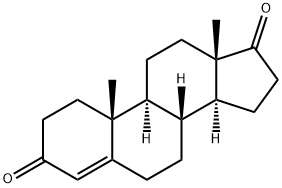2,5-Norbornadiene
Synonym(s):2,5-Norbornadiene;Bicyclo[2.2.1]hepta-2,5-diene;NBD
- CAS NO.:121-46-0
- Empirical Formula: C7H8
- Molecular Weight: 92.14
- MDL number: MFCD00082301
- EINECS: 204-472-0
- SAFETY DATA SHEET (SDS)
- Update Date: 2024-12-18 14:15:30

What is 2,5-Norbornadiene?
Chemical properties
2,5-Norbornadiene, also known as dicycloheptadiene, is a clear colorless to slightly yellow liquid that is soluble in petroleum ether and insoluble in water. Commercially available goods usually contain 500 ppm of 2,6-di-tert-butyl-p-methylphenol (BHT) as a stabilizer. Analyzing the structural characteristics of NBD, it can be found that it has good reaction properties and can synthesize a variety of organic compounds through addition or substitution reactions at the double bond.
The Uses of 2,5-Norbornadiene
2,5-Norbornadiene has an anti-ethylene effect on plants and inhibits polyphenol oxidase, peroxidase and phenylalanine ammonia lyase activities.
The Uses of 2,5-Norbornadiene
2,5-Norbornadiene is used as an intermediate in prostaglandin synthesis and shows anti-ethylene effect on plants. It acts as a starting material for the synthesis of diamantane and as an acetylene transfer agent for instance, in reaction with 3,6-di-2-pyridyl-1,2,4,5-tetrazine. It is also a useful dienophile in Diels-Alder reactions.
What are the applications of Application
Bicyclo[2.2.1]hepta-2,5-diene is an intermediate in prostaglandin synthesis
Preparation
2,5-Norbornadiene is of interest as a metal-binding ligand, whose complexes are useful for homogeneous catalysis. Norbornadiene can be formed by a Diels-Alder reaction between cyclopentadiene and acetylene.
General Description
2,5-norbornadiene, stabilized appears as a colorless liquid. Insoluble in water and less dense than water. Contact may irritate skin, eyes and mucous membranes. May be toxic by ingestion, inhalation and skin absorption. When heated will polymerize and at decomposition emits acrid smoke and irritating fumes.
Air & Water Reactions
Highly flammable. Insoluble in water.
Reactivity Profile
2,5-NORBORNADIENE may react vigorously with strong oxidizing agents. May react exothermically with reducing agents to release hydrogen gas. In the presence of various catalysts (such as acids) or initiators, may undergo exothermic addition polymerization reactions. Violent explosions at low temperatures in ammonia synthesis gas units have been traced to the addition products of dienes and nitrogen dioxide [Bretherick, 5th Ed., 1995].
Health Hazard
Inhalation or contact with material may irritate or burn skin and eyes. Fire may produce irritating, corrosive and/or toxic gases. Vapors may cause dizziness or suffocation. Runoff from fire control or dilution water may cause pollution.
Safety Profile
Poison by intravenous route. Moderately toxic by ingestion and intraperitoneal routes. Mildly toxic by inhalation. A flammable liquid. When heated to decomposition it emits acrid smoke and irritating fumes.
Purification Methods
Purify the diene by distillation from activated alumina [Landis & Halpern J Am Chem Soc 109 1746 1987]. [Beilstein 5 IV 879.]
Properties of 2,5-Norbornadiene
| Melting point: | -20--19°C |
| Boiling point: | 89 °C(lit.) |
| Density | 0.906 g/mL at 25 °C(lit.) |
| vapor pressure | 69 hPa (20 °C) |
| refractive index | n |
| Flash point: | 12 °F |
| storage temp. | Store below +30°C. |
| solubility | Chloroform (Sparingly) |
| form | A liquid |
| color | Colorless to Almost colorless |
| Odor | Very diffusive, gassy-piney, camphoraceous-woody odor |
| explosive limit | 1.6-6.3%(V) |
| Water Solubility | Immiscible with water. |
| λmax | 195nm(EtOH)(lit.) |
| BRN | 506224 |
| Stability: | Volatile |
| CAS DataBase Reference | 121-46-0(CAS DataBase Reference) |
| NIST Chemistry Reference | 2,5-Norbornadiene(121-46-0) |
| EPA Substance Registry System | 2,5-Norbornadiene (121-46-0) |
Safety information for 2,5-Norbornadiene
| Signal word | Danger |
| Pictogram(s) |
 Flame Flammables GHS02 |
| GHS Hazard Statements |
H225:Flammable liquids |
| Precautionary Statement Codes |
P210:Keep away from heat/sparks/open flames/hot surfaces. — No smoking. P233:Keep container tightly closed. P240:Ground/bond container and receiving equipment. P241:Use explosion-proof electrical/ventilating/lighting/…/equipment. P242:Use only non-sparking tools. P243:Take precautionary measures against static discharge. |
Computed Descriptors for 2,5-Norbornadiene
| InChIKey | SJYNFBVQFBRSIB-UHFFFAOYSA-N |
New Products
4-Fluorophenylacetic acid 4-Methylphenylacetic acid N-Boc-D-alaninol N-BOC-D/L-ALANINOL Tert-butyl bis(2-chloroethyl)carbamate 3-Morpholino-1-(4-nitrophenyl)-5,6-dihydropyridin- 2(1H)-one Furan-2,5-Dicarboxylic Acid Tropic acid S-2-CHLORO PROPIONIC ACID ETHYL ISOCYANOACETATE 2-Bromo-1,3-Bis(Dimethylamino)Trimethinium Hexafluorophosphate (6-METHYL-[1,3]DITHIOLO[4,5-b]QUINOXALIN-2-ONE INDAZOLE-3-CARBOXYLIC ACID 4-IODO BENZOIC ACID (2-Hydroxyphenyl)acetonitrile 4-Bromopyrazole 5,6-Dimethoxyindanone 2-(Cyanocyclohexyl)acetic acid 4-methoxy-3,5-dinitropyridine 2-aminopropyl benzoate hydrochloride 1-(4-(aminomethyl)benzyl)urea hydrochloride diethyl 2-(2-((tertbutoxycarbonyl)amino) ethyl)malonate tert-butyl 4- (ureidomethyl)benzylcarbamate Ethyl-2-chloro((4-methoxyphenyl)hydrazono)acetateRelated products of tetrahydrofuran








You may like
-
 121-46-0 2,5-Norbornadiene, 97% 99%View Details
121-46-0 2,5-Norbornadiene, 97% 99%View Details
121-46-0 -
 2,5-Norbornadiene, stabilized with 250ppm BHT CAS 121-46-0View Details
2,5-Norbornadiene, stabilized with 250ppm BHT CAS 121-46-0View Details
121-46-0 -
 2,5-Norbornadiene (stabilized with BHT) CAS 121-46-0View Details
2,5-Norbornadiene (stabilized with BHT) CAS 121-46-0View Details
121-46-0 -
![Bicyclo[2.2.1]hepta-2,5-diene CAS 121-46-0](https://img.chemicalbook.in//Content/image/CP5.jpg) Bicyclo[2.2.1]hepta-2,5-diene CAS 121-46-0View Details
Bicyclo[2.2.1]hepta-2,5-diene CAS 121-46-0View Details
121-46-0 -
 2,5-Norbornadiene CAS 121-46-0View Details
2,5-Norbornadiene CAS 121-46-0View Details
121-46-0 -
 1975-50-4 98%View Details
1975-50-4 98%View Details
1975-50-4 -
 14714-50-2 (2-Hydroxyphenyl)acetonitrile 98+View Details
14714-50-2 (2-Hydroxyphenyl)acetonitrile 98+View Details
14714-50-2 -
 118753-70-1 98+View Details
118753-70-1 98+View Details
118753-70-1